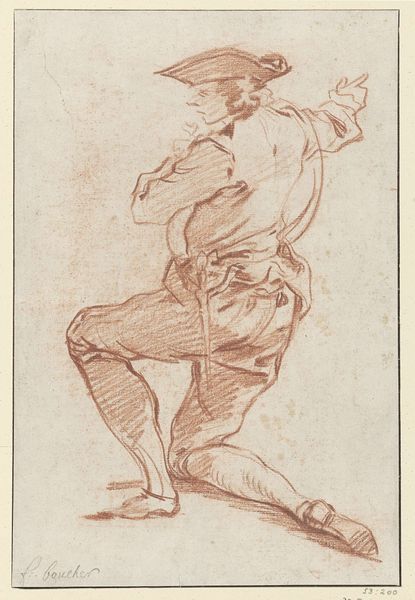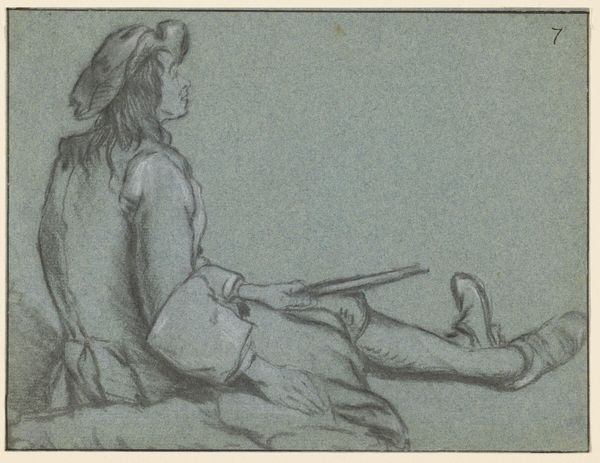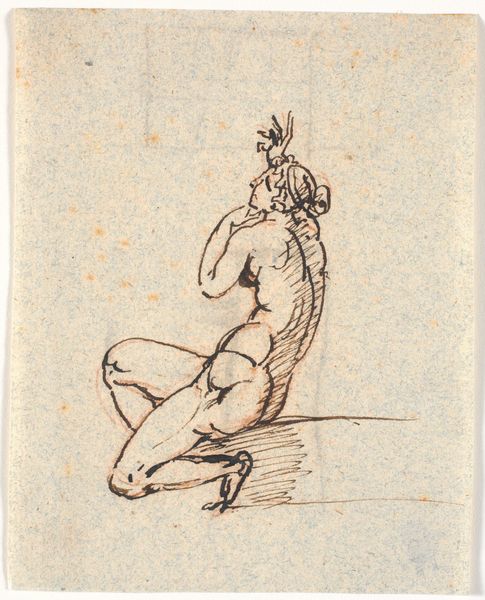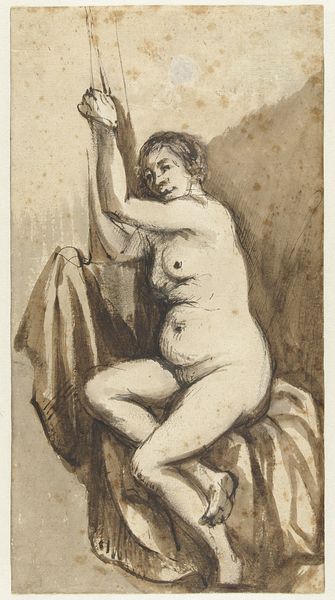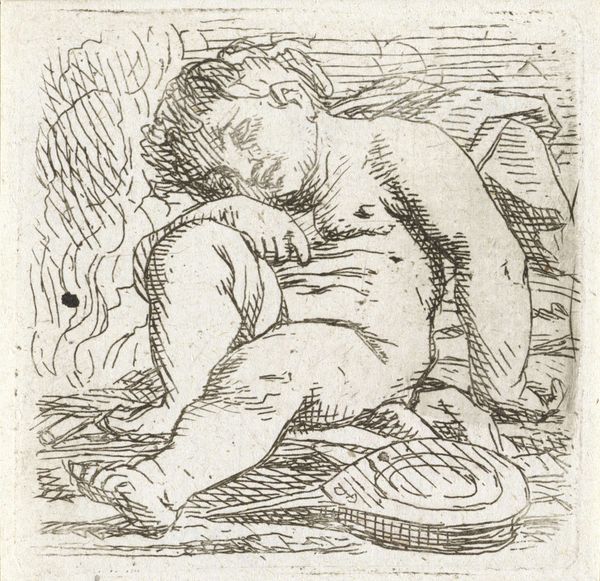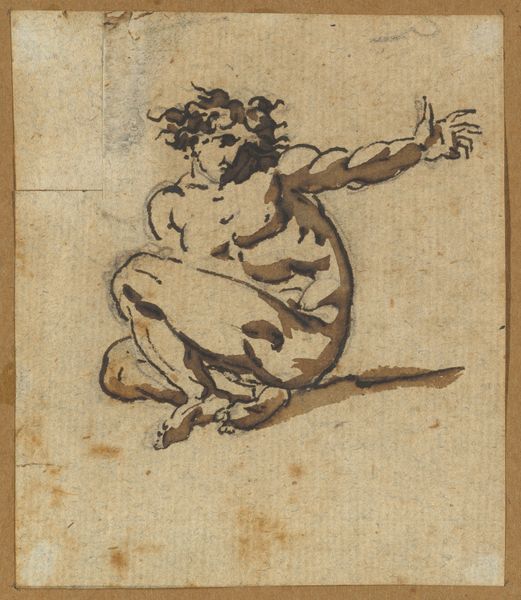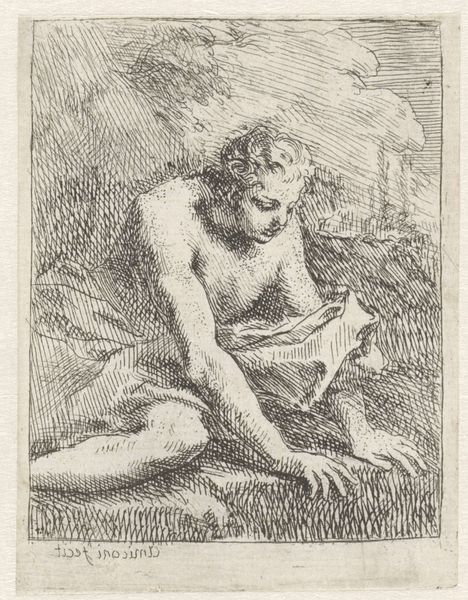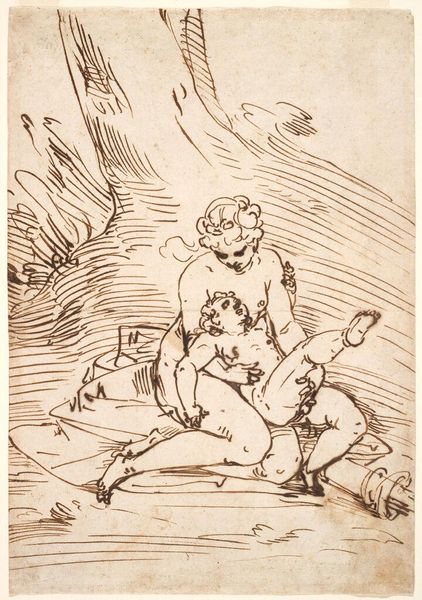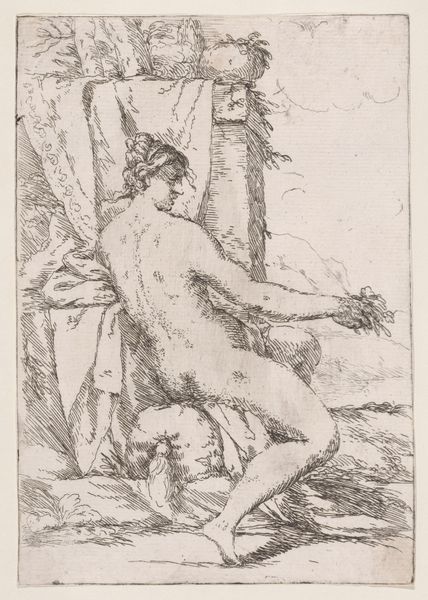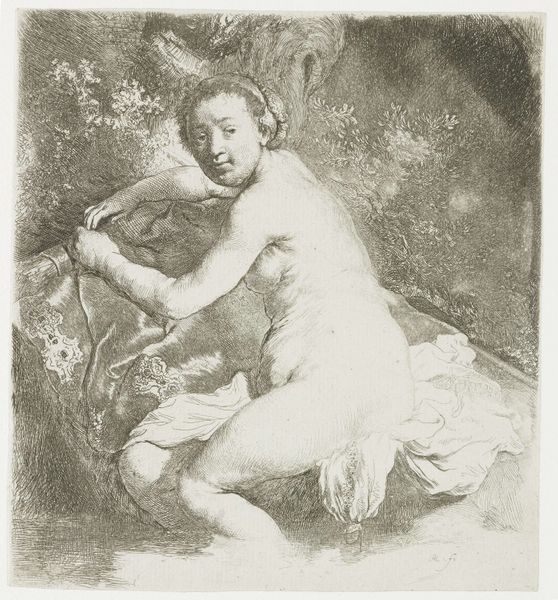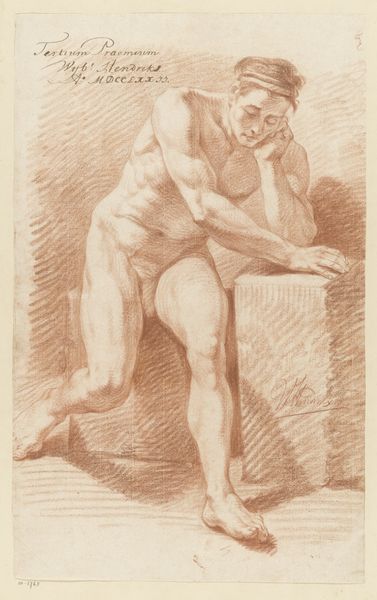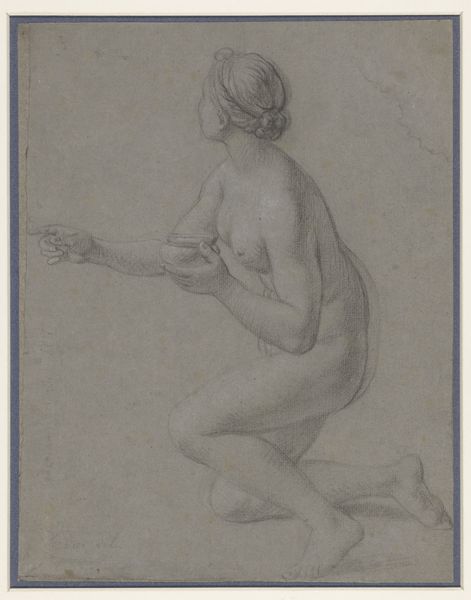
drawing, ink, pencil
#
drawing
#
baroque
#
pen sketch
#
pencil sketch
#
figuration
#
ink
#
pencil
#
nude
Dimensions: height 52 mm, width 52 mm
Copyright: Rijks Museum: Open Domain
Editor: Here we have "Nude Woman on a Rock," a drawing in ink and pencil by Cornelis Schut, dating roughly between 1618 and 1655. There's something unfinished, immediate about it that I find compelling. How do you interpret this work? Curator: I see a study in labor and availability, made visible through the tools of the artist’s trade: ink and pencil on paper. The material process here becomes significant. We're not dealing with a grand, finished history painting but something more akin to the work that gets the product to the end user. Where did the materials come from, and who prepared them for Schut's hand? Editor: So, you're less focused on the figure itself and more on what it represents about the art-making process? Curator: Precisely. How the artist manipulated those materials to create this form is more central for me. Look at the cross-hatching. Think of the artisan creating the pencils. Then consider the social implication that labor is available. This drawing becomes less about idealized beauty and more about class relations within the art world of the Baroque era, challenging that 'high art' narrative. Editor: That’s a perspective I hadn't considered. It changes the way I see the drawing completely, making me think about the value of materials and human effort. Curator: Exactly. And that's the beauty of looking at art this way – it challenges our preconceived notions of what's important. It's an intersection of the intellectual labor to conceive of the image and the physical labor to make that image tangible to those who have commissioned it. Editor: I'll definitely be paying closer attention to the materiality of artworks from now on.
Comments
No comments
Be the first to comment and join the conversation on the ultimate creative platform.
